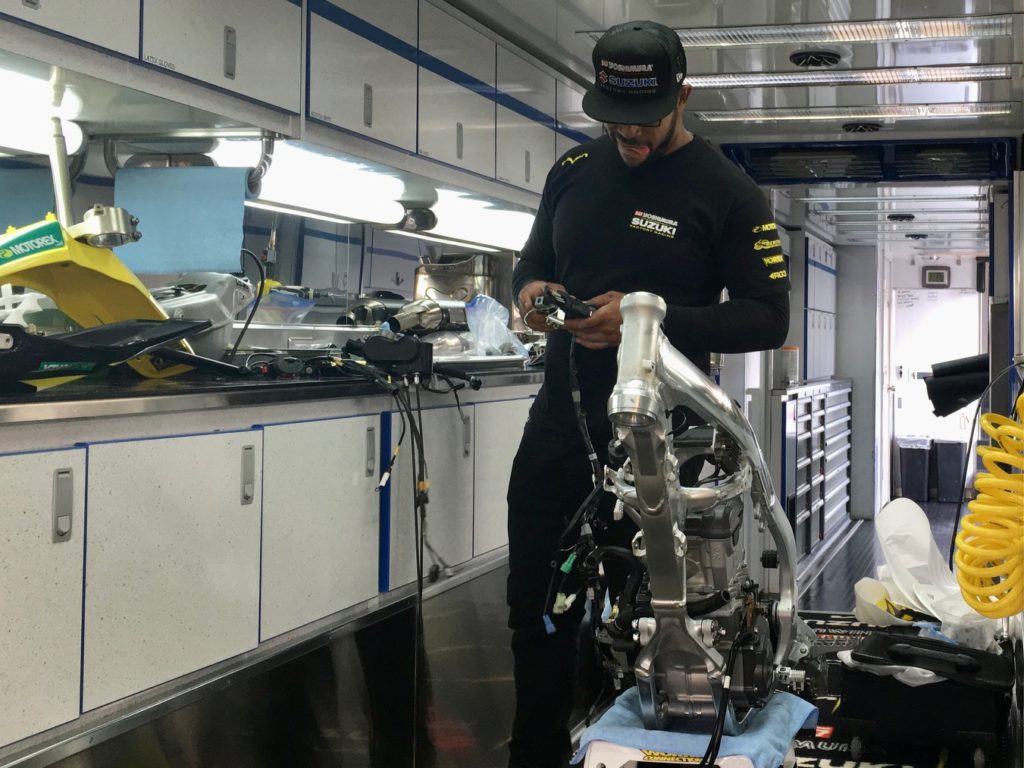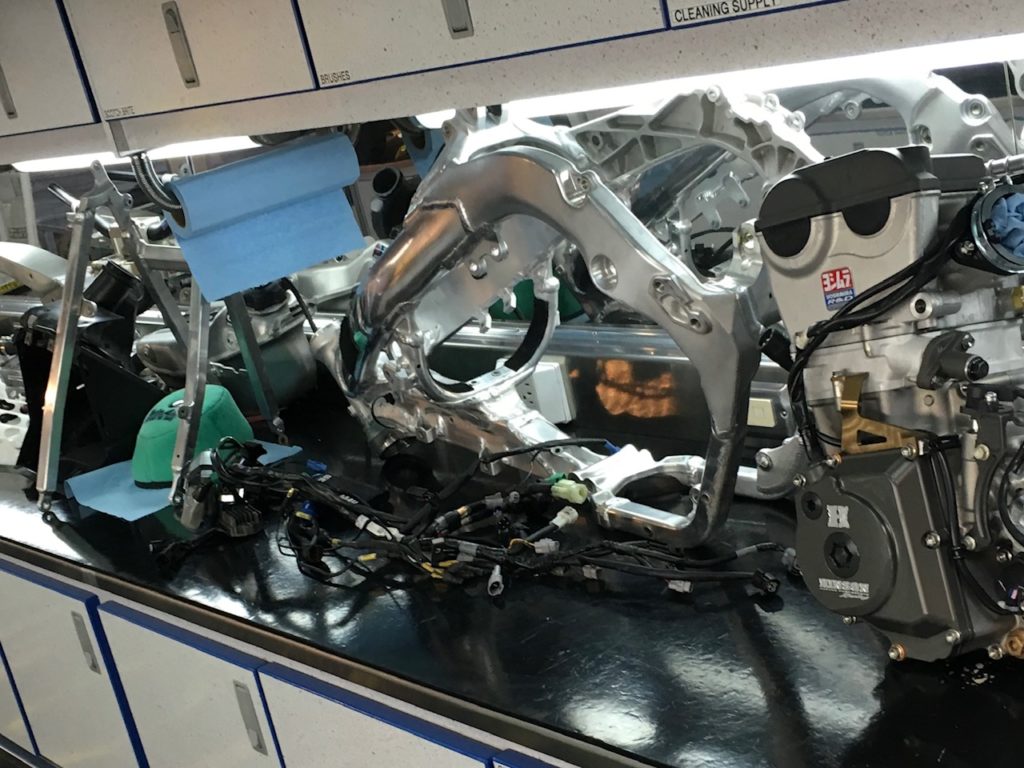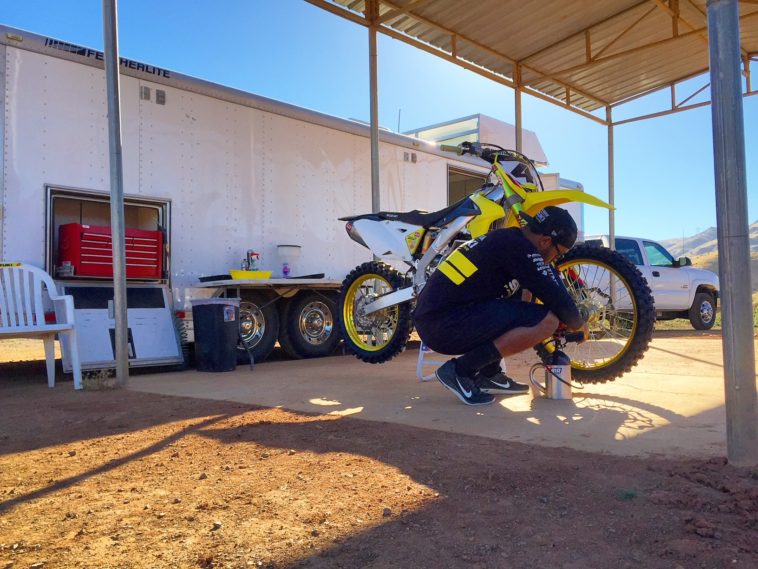The Daytona Supercross (formerly presented by Honda) is one of those races that every fan, racer, and team marks on the schedule. I remember my first time being able to walk the track as a mechanic in 2008 and to see up close how different this race was from the other tracks on the schedule was amazing. The layout, soil, and the venue are a few ways that Daytona separates itself from the rest of the rounds. After spending eight weeks racing supercross on hard packed dirt and clay, a sandy, outdoor styled supercross track is sure to provide both higher speeds, as well as the savory smell of burned clutches between practices.
Daytona is also a turning point in the series for a couple of reasons. Being the halfway point of the season, the true championship contenders will usually separate themselves from the rest of the field by this time. The other reason is, being an “outdoor” style supercross track (higher speeds, ruts, soil, etc), it’s used as somewhat of a gauge so that teams can develop the chassis and/or suspension for the fast approaching motocross season. The week leading into Daytona has always been a way for teams to get a small head start on preferred outdoor settings for each rider. Some teams will throw on a base setting for motocross suspension for that week and play with the clickers. Other teams will test triple clamps, linkages, as well as re-valve suspension. Factory racers even have the ability to ride a small outdoor section that extends from a supercross track at their private facility.

Throughout my years as a mechanic, I’ve been able to see first hand the time, money, and resources that teams put into preparation for Daytona, not to mention the rest of the series and off-season races. Specifically, my time with Yoshimura Suzuki taught me a lot about preparation for practice, testing, race days, and preventative maintenance.
The Daytona Supercross has a lots of sand, which can cause extreme wear on the motorcycle. With this soil comes extra maintenance, and almost any mechanic on the circuit will tell you that attention to detail is important when it comes to building a motorcycle, but especially after a race like Daytona. During the supercross season, some race teams will do a full bike tear down and inspection every two or three races; however, Yoshimura Suzuki was a team that framed and inspected race bikes after every single round. I believe this was a big reason that I never experienced a mechanical DNF during my time there as a mechanic. The pace and talent of todays racers is too high to let potential mechanical issues go unnoticed. With Daytona being much harder on bikes than a normal supercross, factory teams will do a full tear down and inspection on their race machines after the round. Unfortunately, that sugar sand somehow happens to find its way into every crevice on the bike.
From my own experiences after Daytona, any area on the motorcycle that has a bearing will usually have some remnants of sand: steering head, swing arm, linkage, pull rod, wheels, etc. However, in my opinion the most important parts of the motorcycle to clean and inspect after Daytona are the air filter box and the wiring harness. Although I often ran air filter skins over the filter during that weekend, there would always be a minuscule amount of sand and filter grease layered in spots in the mouth as well as the vortex of the filter box. It’s very important to inspect this area not only after the race, but also between sessions during race day in order to make sure your filter is…well…filtering properly, and to prevent sand from being sucked into the engine intake which can create unnecessary engine wear/failure.

The wiring harness is extremely important as well because it serves as the “neuron” pathway from the ECU (or brain) of the motorcycle, to the other functioning parts of the electrical system. If connectors aren’t cleaned and lubricated properly, it can cause corrosion which can produce intermittent communication or failure of the component that’s linked to that particular connector. Not addressing this on a regular basis can cause issues down the road of a 17 round series whether it be on the race or practice bike. Of course, it’s not hard to find sand in most electrical connectors after a race like Daytona; therefore, it was always a priority to be extremely thorough when inspecting and cleaning the harness connectors.
Something that I recognized as a practice mechanic in Florida was that the outer layer of the harness had a little extra wear in particular areas. As the harness vibrates slightly from the RPMs of the engine, sand would get between the frame and the outer layer of the harness and at times wore enough to cause the wires to be exposed inside the harness. A lack of awareness can lead to a false ground on the frame and can cause all sorts of issues for the rider (I’ve been there, and it’s not fun when your rider is yelling about the bike misfiring and you can’t find the problem). Of course I rarely noticed this on race bikes, but on a practice bike with 20+ hours on the harness, it’s something that’s a little more prevalent. If you’ve got more time than that on your personal bike, it may be due for an inspection of it’s own!
It’s not difficult to see why Daytona is a track that presents challenges on all fronts, which is why I’m eagerly looking forward to to seeing what it has in store this weekend for fans and racers alike. I’ve had some rough experiences there, like the monsoon of 2008 or even 2014 when Malcolm Stewart moved up to the 450, ran in the top 5 and got taken out Justin Barcia. It’s also produced some amazing experiences, like my first podium with Blake Baggett in 2015 and a win with Adam Cianciarulo as a practice mechanic in 2017.
It’s such a special racing venue, not only for the fans and racers, but it also challenges team personnel to build a more efficient motorcycle in a series that can become mundane for long time mechanics. Its exciting to see changes in our sport, like the triple crown events, and even the metal starting grates that help even the competition every week. However, Daytona is a staple in our sport that brings a unique energy every season that it’s on the schedule. Here’s to sunny skies and great racing this weekend in the sunshine state!





